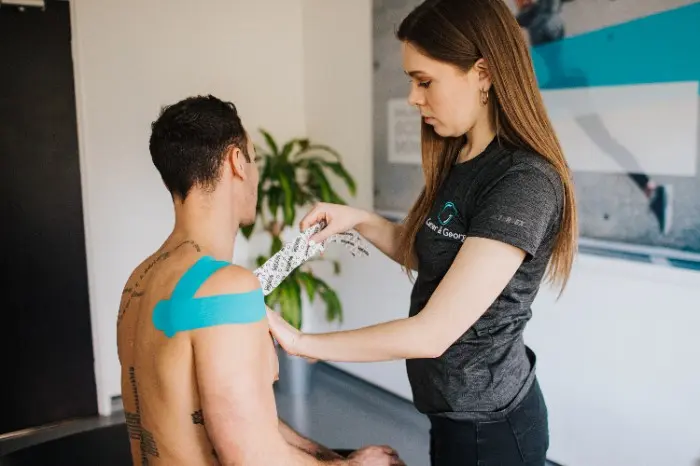The shoulder’s anatomy prioritizes mobility over stability, making it vulnerable to injuries during tackles, collisions, and repetitive motions. This trade-off between mobility and stability requires athletes to take proactive steps to strengthen and protect their shoulders. Here is some information on how athletes can help prevent shoulder injuries while participating in contact sports.
Common Shoulder Injuries
Athletes in contact sports often face a variety of shoulder injuries, each with unique causes and characteristics. Shoulder dislocations are a common injury, occurring when the upper arm bone pops out of the shoulder socket. This typically happens from direct impacts or falls onto an outstretched arm, making dislocations prevalent in sports like football, rugby, and hockey. These injuries can be painful and require prompt treatment to restore stability and mobility.
Another common shoulder injury is the acromioclavicular (AC) joint separation, often referred to as a “shoulder separation.” This occurs when the ligaments connecting the collarbone to the shoulder blade are damaged. These injuries are usually caused by direct blows to the top of the shoulder or falls onto the shoulder itself. Sports involving frequent collisions, such as hockey or rugby, are prone to these types of injuries.
Rotator cuff injuries and labral tears also affect athletes. Rotator cuff injuries involve damage to the muscles and tendons that stabilize the shoulder joint, often caused by repetitive stress or overuse, especially in sports requiring overhead motions. These injuries often occur during extreme arm positions in tackles or collisions, highlighting the physical demands of contact sports.
Strengthen Your Shoulders
Preventing shoulder injuries requires a comprehensive approach that addresses strength, flexibility, and technique. A well-designed strengthening program forms the foundation of shoulder injury prevention. Focus on exercises that target the rotator cuff muscles, which provide stability to the shoulder joint. Internal and external rotation exercises using resistance bands or light weights help build strength in these smaller stabilizing muscles.
Don’t neglect the larger muscle groups surrounding the shoulder. Strengthening the deltoids, latissimus dorsi, and serratus anterior muscles provides additional support and helps distribute forces more evenly across the joint. Push-ups, pull-ups, and overhead pressing movements can effectively target these areas when performed with proper form.
Use Proper Technique
Flexibility and mobility help with injury prevention. Stretching the chest, shoulders, and upper back maintains joint mechanics and reduces the risk of impingement. Dynamic warm-ups increase blood flow and range of motion, preparing the shoulder for competition. Proper technique plays a key role in preventing shoulder injuries. Coaches should teach safe tackling, blocking, and falling techniques to minimize direct impacts and avoid acute injuries.
Build Consistent Routines
Creating an effective shoulder injury prevention program requires consistency and gradual progression. Begin with basic exercises and steadily increase intensity and complexity as strength improves. Aim to include strengthening exercises 2-3 times per week in the off-season, with maintenance sessions during competition periods.
Recovery and rest are just as important as training in any prevention program. Proper sleep, balanced nutrition, and scheduled rest days allow tissues to repair and adapt to training stress. Athletes should monitor for early signs of overuse, such as lingering soreness or reduced performance, and adjust their routines accordingly.
Protect Your Shoulders
Protecting your shoulders takes commitment but reduces injury risk and boosts performance. Start with basic strengthening and flexibility exercises, gradually building a program suited to your sport. Prevention is always more effective and less costly than treatment. Strengthening your shoulders is an investment in your long-term athletic success and quality of life.


